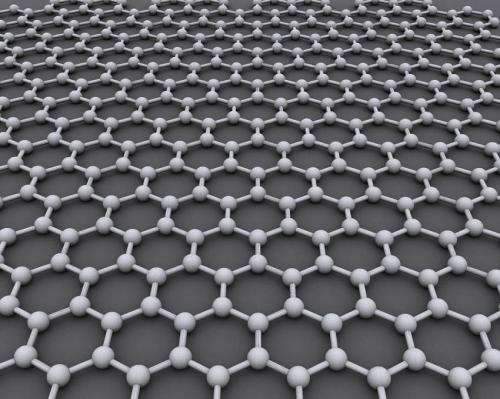Scientists grow a new challenger to graphene

A team of researchers from the University of Southampton's Optoelectronics Research Centre (ORC) has developed a new way to fabricate a potential challenger to graphene.
Graphene, a single layer of carbon atoms in a honeycomb lattice, is increasingly being used in new electronic and mechanical applications, such as transistors, switches and light sources, thanks to the unprecedented properties it offers: very low electrical resistance, high thermal conductivity and mechanically stretchable yet harder than diamond.
Now, ORC researchers have developed molybdenum di-sulphide (MoS2), a similar material to graphene that shares many of its properties, including extraordinary electronic conduction and mechanical strength, but made from a metal (in this case molybdenum combined with sulphur).
This new class of thin metal/sulphide materials, known as transition metal di-chalcogenides (TMDCs), has become an exciting complimentary material to graphene. However, unlike graphene, TMDCs can also emit light allowing applications, such as photodetectors and light emitting devices, to be manufactured.
Until recently, fabrication of TMDCs, such as MoS2, has been difficult, as most techniques produce only flakes, typically just a few hundred square microns in area.
Dr Kevin Huang, from ORC who has led the research, explains: "We have been working on the synthesis of chalcogenide materials using a chemical vapour deposition (CVD) process since 2001 and our technology has now achieved the fabrication of large area (>1000 mm2) ultra- thin films only a few atoms thick. Being able to manufacture sheets of MoS2 and related materials, rather than just microscopic flakes, as previously was the case, greatly expands their promise for nanoelectronic and optoelectronic applications."
Dr Huang and his team published their findings in the latest issue of the journal Nanoscale. They are currently working with several UK companies and universities, as well as leading international centres at MIT and Nanyang Technological University (Singapore).
Dr Huang adds: "Our ability to not only synthesise large uniform thin films but also to transfer these films to virtually any substrate has led to increased demand for our materials. We welcome enquiries from universities and industry who wish to collaborate with us."
Journal information: Nanoscale
Provided by University of Southampton




















